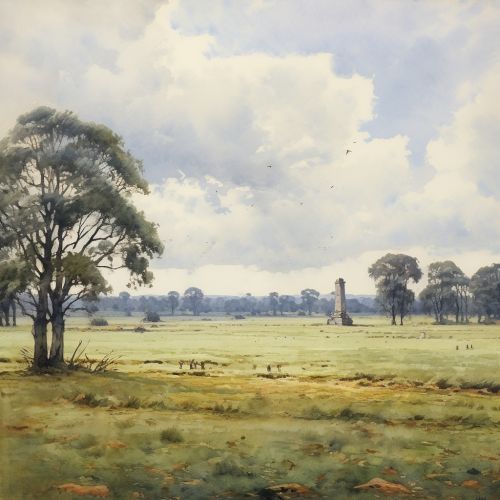Battle of Plassey
Background
The Battle of Plassey was a pivotal moment in the history of India, marking the beginning of British colonial rule. This battle took place on 23 June 1757, near the village of Plassey, located in the Bengal Presidency of British India. The conflict was between the British East India Company, led by Robert Clive, and the Nawab of Bengal, Siraj-ud-Daulah, along with his French allies.


Prelude to the Battle
The roots of the Battle of Plassey can be traced back to the growing tensions between the British East India Company and the Nawab of Bengal. The British were increasingly encroaching on the Nawab's authority, building fortifications without his permission and sheltering his political enemies. This led to the Nawab attacking the British in Calcutta in 1756, an event known as the Siege of Calcutta. The British were defeated and forced to surrender, which led to the infamous incident known as the Black Hole of Calcutta.
The Battle
The British, under the command of Robert Clive, retaliated by recapturing Calcutta in January 1757 and then sought to depose the Nawab. The Nawab, in turn, formed an alliance with the French, who were also seeking to extend their influence in India. The stage was set for the Battle of Plassey, which took place on 23 June 1757.
The battle itself was short and decisive. The British forces were heavily outnumbered, with around 3,000 troops against the Nawab's 50,000. However, the Nawab's forces were not as unified as they appeared. Mir Jafar, one of the Nawab's top commanders, had been secretly negotiating with the British and agreed to betray the Nawab during the battle.
When the battle commenced, the Nawab's forces initially held the upper hand, but the tide turned when Mir Jafar held back his troops, causing a crucial shift in the balance of power. The Nawab's forces were eventually routed, and the Nawab himself fled the battlefield.
Aftermath
The Battle of Plassey marked the beginning of British colonial rule in India. The British installed Mir Jafar as the new Nawab of Bengal, effectively making him a puppet ruler. This victory allowed the British East India Company to extend its influence over the region and marked the beginning of the British Raj.
The battle also had significant implications for the French, who lost their foothold in Bengal and were eventually driven out of India by the British. The Battle of Plassey thus marked a turning point in the European struggle for control of India.
Significance
The Battle of Plassey is often seen as the starting point of the British Empire in India. It established the British East India Company as a military as well as a commercial power. The victory at Plassey enabled the Company to gain control of the rich Bengal province, and eventually, the whole of India.
The battle also marked the beginning of the end for the Mughal Empire. The British's ability to manipulate the local rulers and play them off against each other demonstrated the weakness of the Mughal authority and paved the way for the British to extend their control over the entire subcontinent.
